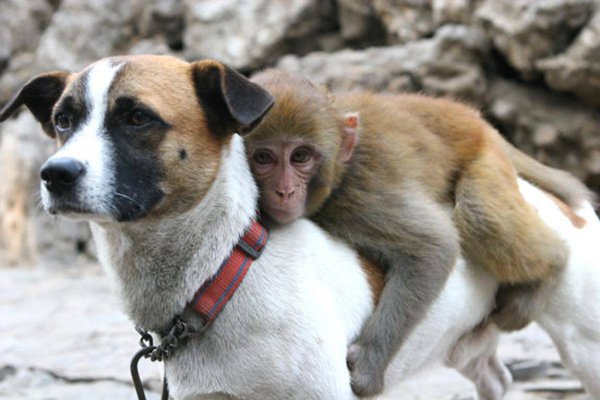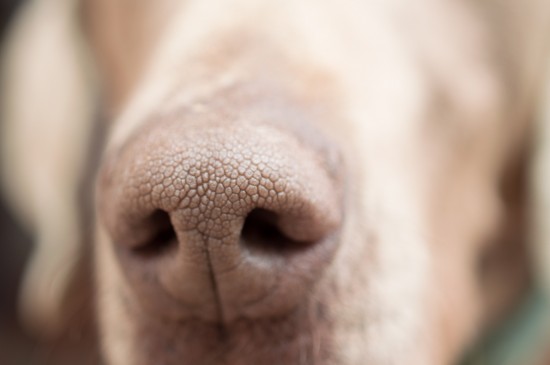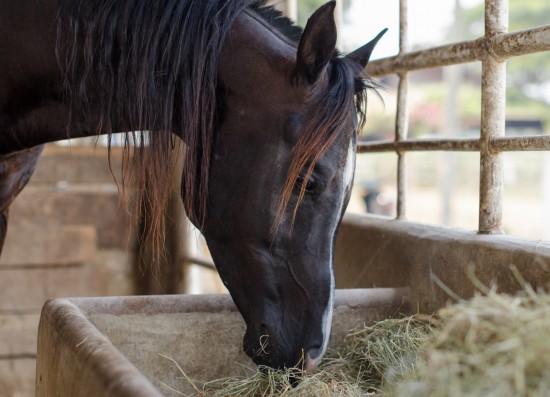When fed the same food for long periods of times many dogs and cats will develop signs of intolerance to the foods protein source. Some of these signs may include itchy skin and paws, chronic digestive issues such as gas, loose stools or frequent vomiting. Of course prevention is the best medicine and one way to avoid the development of protein intolerance is by rotating between three or four different foods with different protein sources. For example, feed a food with beef as the protein source and then switch to chicken, then to fish. This will provide a wide variety of amino acids as well as a more nutritionally complete diet.
If your veterinarian has diagnosed a food allergy they will most likely place your pet on a diet with a unique protein and carbohydrate. These are sometime referred to as novel proteins or carbohydrates. A unique protein is one that your pet has never been exposed to. Originally Lamb and rice diets were the common choice but over time this formula gained popularity to such a degree that many of the pet food manufacturers began introducing it into their product lines. The result is that most dogs and cats have been fed lamb as a protein source at some point.
The pet food companies understand a need for and see a growing market for these unique formulations in pet foods and are producing more and more allergy formula types of foods with an incredibly wide variety of different and even exotic sources of protein. Some of these protein sources include duck, rabbit, herring, venison and even kangaroo. This is helpful when a pet owner is required to find a unique protein source for their pet. A word of caution though, do not feed your pet every different type of protein offered as this will limit your options should you find yourself in need of placing your pet on a restricted protein type of diet.
If as a pet owner, you find the need to search out a new protein source for your pet be certain to read labels very carefully. Many pet foods are labeled in such a way as to suggest a unique protein such as venison but may also contain other protein sources as well such as eggs or chicken. It is best to look for foods formulated especially for pets with sensitivities. Some good examples of this would be California Natural, Wellness Simple Foods, Natural Balance Allergy Formulas or Wysong Anergen. Many companies also offer 95% to 100% meat in canned formulas with a variety of unique protein sources; for example, Innova EVO offers Duck and Venison. Another thing to look for in the premix formulas are ingredients such as alfalfa or other grains as these may also contribute food allergies.
Once you have placed your pet on a restricted protein diet it will take some time to determine whether it is of benefit or not, possibly up to 12 weeks although it is quite possible to see improvement in as little as 4 to 8 weeks. Once you have found a protein source that your pet is able to tolerate it is advisable to search out at least one more unique protein that they can handle in order to rotate protein sources in their diet. This is advisable since most pets that have demonstrated the tendency towards food intolerance are more likely to develop additional sensitivities making the rotation of the protein source in their diet all the more important.
Just because a pet may have a food allergy that requires a restricted diet doesnt mean that treats have to fall to the wayside. There are many products designed especially for pets with food sensitivities so that as a pet owner you are still able to reward your companion with a tasty treat. Plato Smart Strips are an excellent choice; they offer treats made with duck, salmon and kangaroo meat. Another great option is Only Natural Pet Venison Jerky Bites or their Bison Strips. Also any of the freeze-dried meat treats work very well.
Another common cause for pet food allergies is grains. Some pets may have a grain allergy instead of, or as well as a protein allergy. For pet owners with pets with grain related allergies in addition to protein allergies the increase in grain free foods may seem a blessing. The problem arises in that while many of the grain free foods offer some very unique protein sources such as duck, bison, venison and salmon they are often combined with each other, exposing your pet to more than one protein source. While your pet may tolerate these unique proteins quite well it limits your choices if at some later time you must place your pet on a more restrictive diet. Also these more exotic protein sources are often combined with more common sources such as turkey, chicken or beef so be sure to read the labels carefully.
Having a pet with food allergies does require a bit more research and diligence on the part of the pet owner. However with the wide variety of unique protein sources as well as allergy formulas available it should be relatively easy to find two or three protein sources the pet can tolerate.

 What are the Benefits of Getting Dog Kennels and Grooming Services?
What are the Benefits of Getting Dog Kennels and Grooming
What are the Benefits of Getting Dog Kennels and Grooming Services?
What are the Benefits of Getting Dog Kennels and Grooming
 6 Reasons Why Your Dog May Have A Dry Nose
6 Reasons Why You
6 Reasons Why Your Dog May Have A Dry Nose
6 Reasons Why You
 How To Feed A Post-laminitic Horse
How To Feed A Pos
How To Feed A Post-laminitic Horse
How To Feed A Pos
 7 Breeds Of Dog That Do Well In Apartments
7 Breeds Of Dog T
7 Breeds Of Dog That Do Well In Apartments
7 Breeds Of Dog T
 Why Might Your Dog Suddenly Become Clingy?
Why Might Your Do
Why Might Your Dog Suddenly Become Clingy?
Why Might Your Do